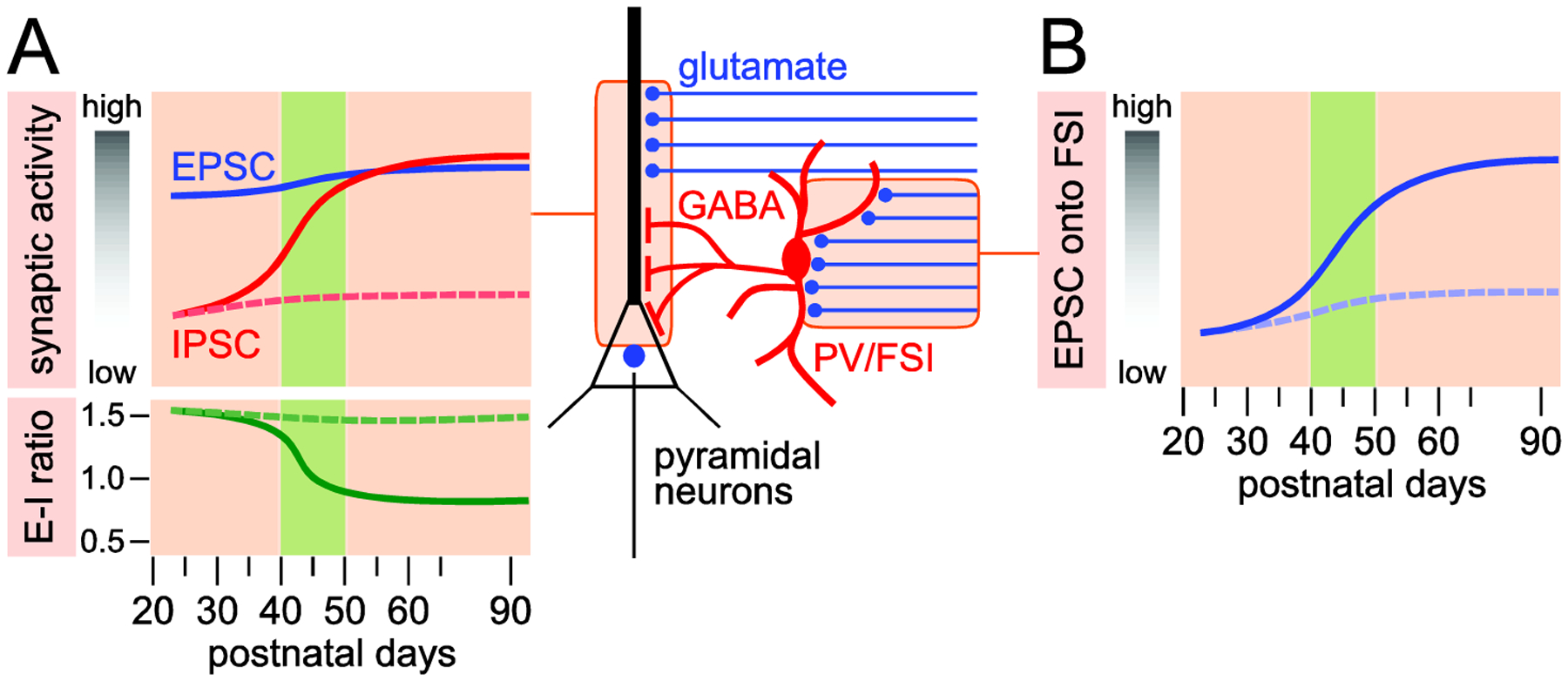Figure 1:

Adolescence is a critical period for synaptic activity in the PFC. A. The frequency of excitatory postsynaptic currents (EPSC) onto pyramidal output neurons remains relatively constant during the transition from adolescence to adulthood (blue line). Conversely, basal inhibitory postsynaptic currents (IPSC) increase sharply after postnatal day 40–45 (red line). Thus, the excitatory-inhibitory (E-I) ratio of synaptic activity became balanced after postnatal day 50 through adulthood. Dotted lines indicate the trajectory of IPSC and E-I ratio in the PFC upon disruption of NMDAR function [13] and parvalbumin (PV) expression [12] during adolescence. B. Characteristic developmental facilitation of EPSC frequency onto fast-spiking interneurons (FSI) in the PFC during adolescence. Dotted line illustrates trajectory of EPSC upon disruption of NMDAR function [13] and PV expression [12] in the PFC during adolescence.
